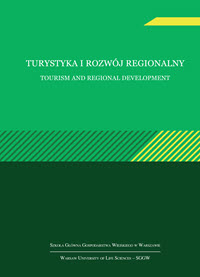Main Article Content
Article Details
Banaszak, I. (2008). Agricultural Producer Groups in Poland: Empirical Survey Results. Journal of Rural Cooperation 36 (1), pp. 73–86. DOI: https://doi.org/10.22004/ag.econ.163449
Chaddad, F. R., Cook, M. L. (2004). Understanding New Cooperative Models: An Ownership-Control Rights Typology. Review of Agricultural Economics 26 (3), pp. 348–360.
Chlebicka, A., Pietrzak, M. (2018). Size of Membership and Survival Patterns of Producers’ Organizations in Agriculture-Social Aspects Based on Evidence from Poland. Sustainability 10 (7), p. 2293. DOI: https://doi.org/10.3390/su10072293
Dacin, M. T., Hitt, M. A. (1997). Selecting partners for successful international alliances: Examination of U.S and Korean firms. Journal of World Business 32, pp. 3–16.
Das, T. K., Teng, B. S. (2000). A resource-based theory of strategic alliances. Journal of Management 26 (1), pp. 31–61.
Dyer, J. H., Singh, H. (1998). The relational view: Cooperative strategy and sources of interorganizational competitive advantage. Academy of Management Review 23 (4), pp. 660–679.
Fałkowski, J., Ciaian, P. (2016). Factors Supporting the Development of Producer Organizations and their Impacts in the Light of Ongoing Changes in Food Supply Chains: A Literature Review. JRC Technical Report No. EUR 27929 EN, Joint Research Centre, European Commission, pp. 1–57. DOI: https://doi.org/10.2791/21346
Geringer, J. M. (1991). Strategic determinants of partner selection criteria in international joint ventures. Journal of International Business Studies 22, pp. 41–61.
Gulati, R., Nohria, N., Zaheer, A. (2000). Strategic networks. Strategic Management Journal 21 (3), pp. 203–215. DOI: https://doi.org/10.1002/(SICI)1097-0266(200003)21:3<203::AID-SMJ102>3.0.CO;2-K
Hendrikse, G., Bijman J. (2002). Ownership Structure in Agrifood Chains: The Marketing Cooperative. American Journal of Agricultural Economics 84, pp. 104–119. DOI: https://doi.org/10.1111/1467-8276.00246
Krzyżanowska, K., Parzonko, A., Sieczko, A. (2020). Przedsiębiorczość zespołowa na obszarach wiejskich. Stan i perspektywy rozwoju. Warszawa: Wydawnictwo SGGW.
Lavie, D. (2006). The competitive advantage of interconnected firms: An extension of the resource-based view. Academy of Management Review 31 (3), pp. 638–658. DOI: http://doi.org/10.5465/APBPP.2002.7516490
Menard, C. (2004). The Economics of Hybrid Organizations. Journal of Institutional and Theoretical Economics 160 (3), pp. 345–376.
Pietrzak, M. (2019). Fenomen spółdzielni rolników – pomiędzy rynkiem, hierarchią i klanem. Warszawa: Wydawnictwo CeDeWu.
Tatoglu, E. 2000. Western joint ventures in Turkey: Strategic motives and partner selection criteria. European Business Review 12, pp. 137–147.
Downloads
- Anna Sieczko, Kulinarne doświadczenia jako nowy obszar badań w ramach doradztwa turystycznego , Turystyka i Rozwój Regionalny: Nr 19 (2023)
Możesz również Rozpocznij zaawansowane wyszukiwanie podobieństw dla tego artykułu.
- Joanna Domagała, Michał Pietrzak, Regionalne zróżnicowanie efektywności szkolnictwa wyższego w Polsce , Turystyka i Rozwój Regionalny: Nr 20 (2023)
- Aleksandra Chlebicka, Michał Pietrzak, Social capital and members’ loyalty in agricultural producer organizations in Poland , Turystyka i Rozwój Regionalny: Nr 18 (2022)

Utwór dostępny jest na licencji Creative Commons Uznanie autorstwa – Użycie niekomercyjne 4.0 Międzynarodowe.





